How we restore power during an outage
Outage Restoration
Understanding the grid
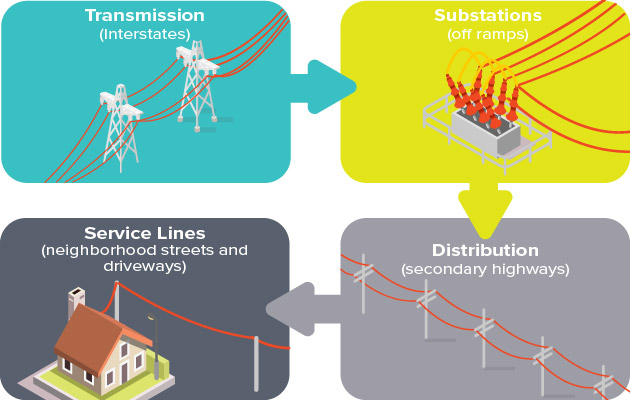
Understanding the grid
You can think of the electric grid like roads. Our transmission lines carry lots of electricity long distances and are like interstates. Substations are like off ramps, connecting interstates to smaller roads. Distribution lines are like secondary highways, and service lines are like neighborhood roads or driveways.
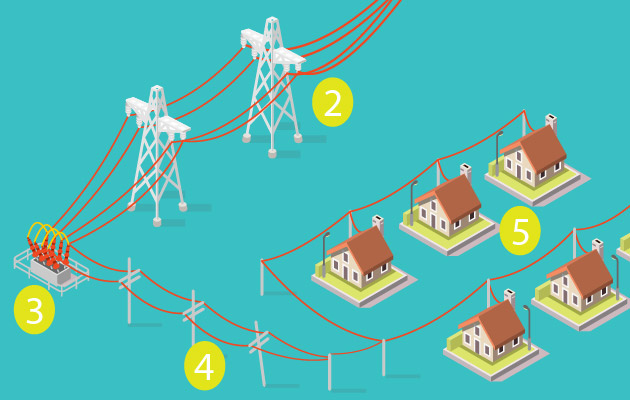
NorthWestern Energy is committed to keeping power outages to a minimum. However, sometimes outages are unavoidable.
During a widespread outage, we prioritize repairs to restore power to the largest number of customers possible, as quickly as possible while keeping everyone safe.
Here’s what happens during an outage:
Step 1:
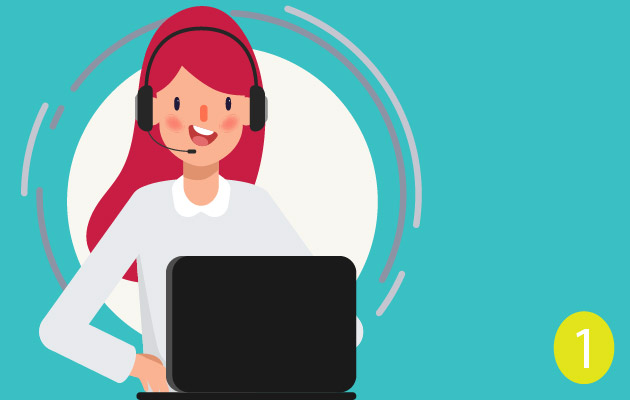
Step 1:
We learn about an outage, either from an advanced meter alerting us or a customer calling to let us know the power is out. These reports are sent to our control center. From there, controllers work to restore power remotely, and if that’s not possible, they contact our line crews, who are on call 24 hours a day, 365 days a year. When crews arrive on scene, their first priority is safety. They secure the area as quickly as possible to protect the public from danger.
Step 2:

Step 2:
Transmission lines carry large amounts of power across long distances and deliver power to substations. If a transmission line is damaged, it can disrupt power to thousands of people. Transmission lines must be repaired first.
Step 3:
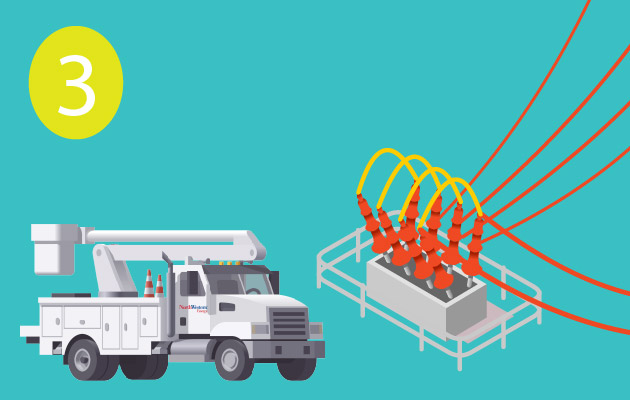
Step 3:
A single substation can distribute power to thousands of homes and businesses. When a major outage occurs, we check to see if it’s a substation issue. Repairs to a substation can restore power to several neighborhoods at once. Sometimes we can route power to customers from a different substation while we work on repairs.
Step 4:
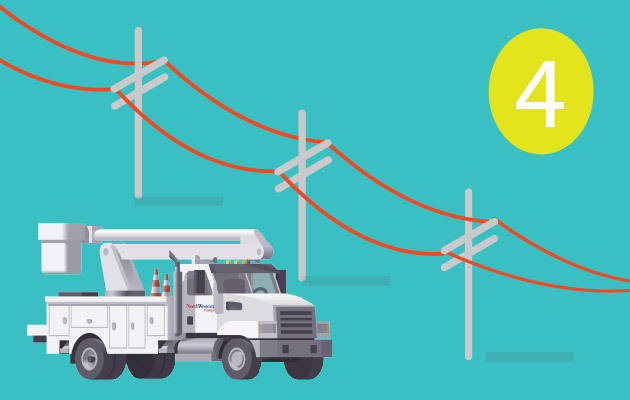
Step 4:
Distribution lines carry power from substations to neighborhoods or business areas. Repairing problems with distribution lines can restore power to hundreds of customers.
Step 5:
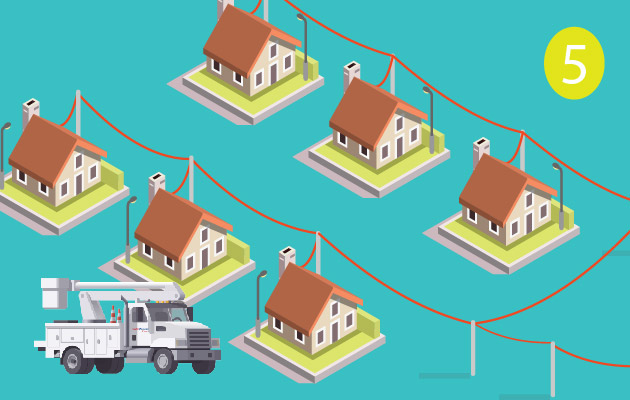
Step 5:
Once all the “interstates” and “highways” are repaired, we can start focusing on “neighborhood streets” and “driveways.” These are the service lines that take power to individual homes and businesses. Repairing service lines restores power to one or a few
customers at a time. In a widespread outage, we don’t start with repairs to service lines because the problem is usually “upstream” from the service line, and we need to get power flowing before we can get it to your house.
Frequently Asked Questions
How do I sign up for outage alerts?
Get an email or text notification if your power goes out, when it is restored and more.
Login to My Energy Account and select “Notifications” from the menu. If you aren’t registered for My Energy Account, sign up today! It’s free and easy.
My power is out and I'm worried the food in my fridge or freezer will go bad. What should I do?
Do not open freezers or refrigerators more than necessary. A refrigerator will keep food cold for about 4 hours if it is unopened. A full freezer will keep the temperature for approximately 48 hours (24 hours if it is half full) if the door remains closed.
You can fill empty space in your freezer with perishable items from your refrigerator, which will help keep these items fresh and help your freezer keep it's temperature. You can also fill your freezer with jugs of water or bags of ice.
If the power doesn't come back on after four hours, you may want to consider buying ice and filling a cooler. Move perishable items from your fridge to the cooler. Use a thermometer to make sure the cooler stays below 40 degrees. Add ice as needed.
What should I do if I see a downed power line?
Strong winds, ice and heavy snow can lead to downed power lines. If you see a downed or damaged power line, keep your distance and call 911 immediately.
Never touch a power line or any object, including trees, that is in contact with a line. Remember:
- Keep people, equipment and objects at least 30 feet away from power lines.
- Never attempt to remove a fallen tree or branch from a power line. You could be seriously injured or killed.
- If a tree or branch does come in contact with a power line, keep yourself and others away from the tree and call 911 and NorthWestern Energy immediately.
What causes power outages?
Outages occur for many reasons. Here are the most common causes of unplanned outages:
- System equipment, such as service lines, underground conductor, transformers and insulators.
- Birds and squirrels.
- Debris on the pole or in the line.
- Weather, such as snow, thunderstorms or extreme temperatures.
How long does it take to restore power?
This can vary greatly depending on the cause of an outage. Sometimes restoring power is as simple as removing a branch that has fallen on a line. Other times, it might require replacing a pole that was hit by a vehicle or blown over in a storm. Sometimes we can switch customers to a different circuit while we make repairs, greatly reducing outage time. If a major storm knocks down numerous poles and takes out several lines, an outage can last hours or even days.
Our top priority is always the safety of our crews and our customers. While restoring power quickly is our goal, our crews take the time required to make repairs safely.
I don’t have power, but my neighbor does. Why?
in your home. Be sure to check your fuses or breaker box.
What should I do if my power goes out?
Check fuses or circuit breakers to rule out problems with electricity inside your home. If there’s not an issue with your fuses or breakers, report the outage to NorthWestern Energy. You can report outages online or by calling:
- 888-467-2669 in Montana or
- 800-245-6977 in South Dakota/Nebraska


